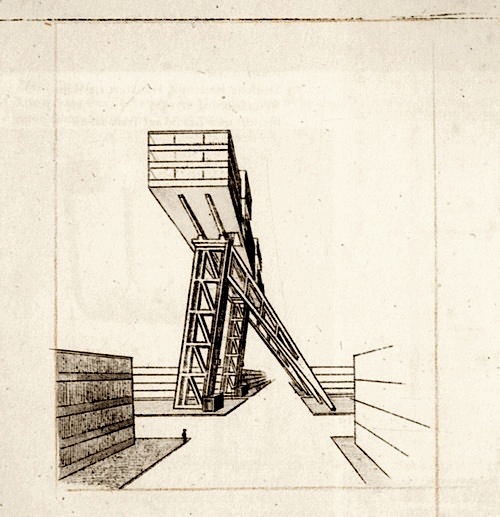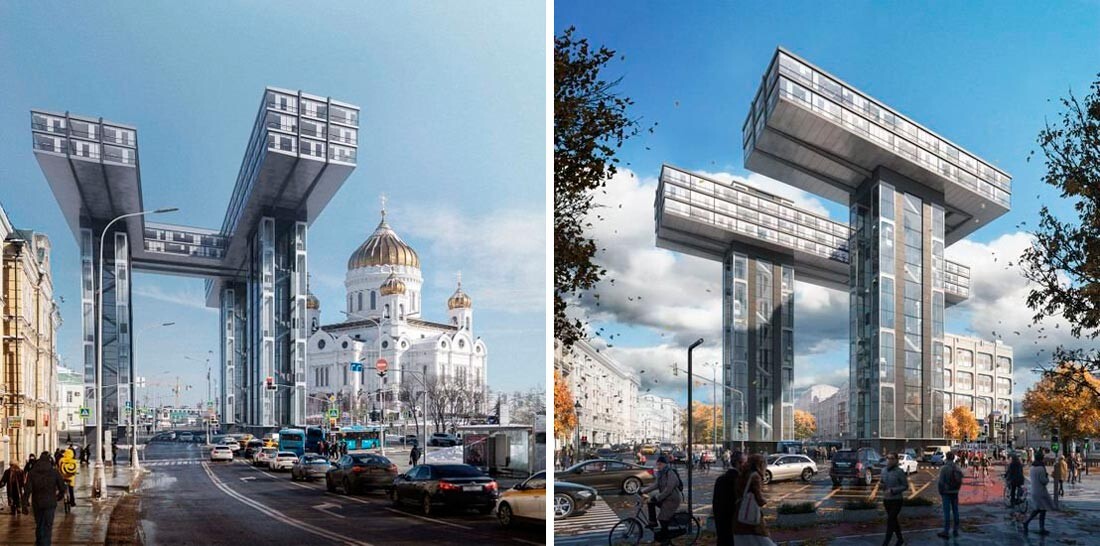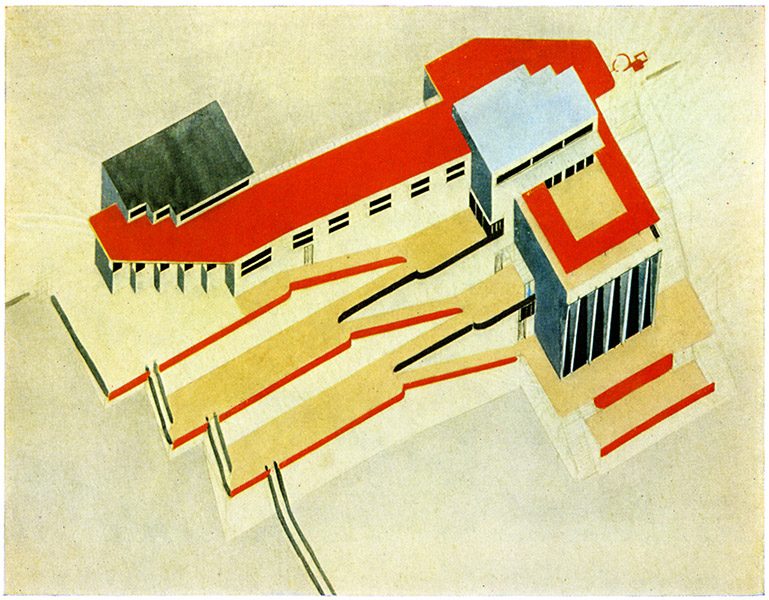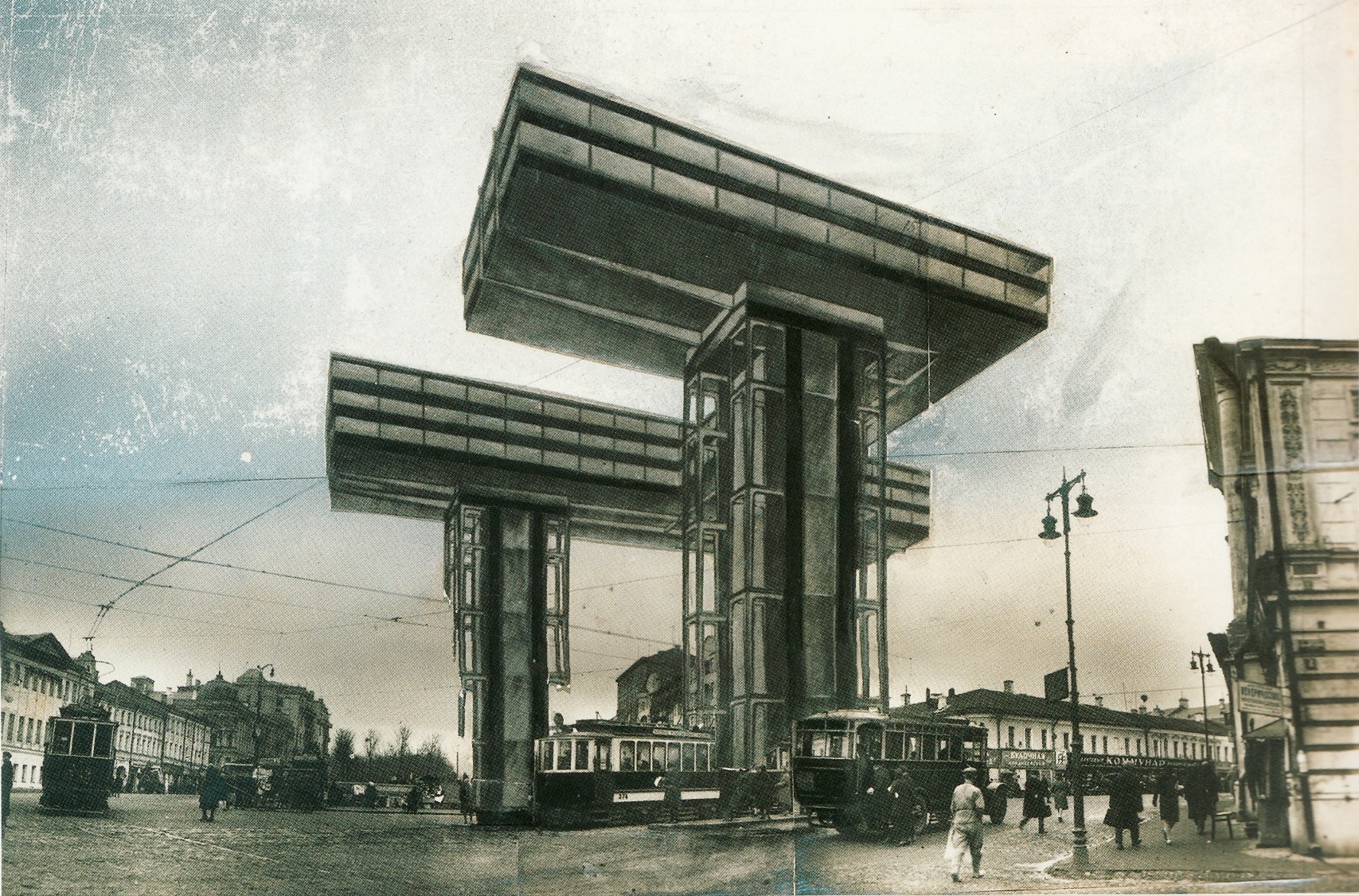
El Lissitzky’s “Architecture in the USSR” (1925) The CharnelHouse
Follow Russia Beyond on Instagram. Cloud Iron, or Wolkenbügel, was the name of the project of eight horizontal skyscrapers by architect El Lissitzky that were supposed to appear in the most.

El Lissitzky’s horizontal skyscrapers how would they have looked now
Samuel Johnson is Carole and Alvin I. Schragis Faculty Fellow and Assistant Professor of Art History in the Department of Art & Music Histories at Syracuse University. He is a specialist in the art and architecture of the Soviet avant-garde and is currently completing a book manuscript titled El Lissitzky on Paper: Print Culture, Architecture, Politics, 1919-1933.

These Six Amazing Unbuilt Landmarks Could Have Changed Moscow Forever
El Lissitzky (1890-1941) was an artist, designer, photographer, typographer, polemicist and architect. He was an important figure of the Russian avant-garde, helping develop suprematism with his mentor, Kazimir Malevich, and designing numerous exhibition displays and propaganda works for the Soviet Union.His work greatly influenced the Bauhaus and constructivist movements, and he experimented.

El Lissitzky Proun 5 A, 1923 Konstruktivism, Abstrakt, Konst
El Lissitzky was a Russian-born designer and artist linked with various MODERNIST organisations, including Suprematism and DE STIJL. Education. He studied architecture at the Technische Hochschule in Darmstadt (The Darmstadt University of Applied Sciences) from 1909 to 1914 and Riga Polytechnic from 1915 to 1916. Biography

Biography of El Lissitzky Widewalls
El Lissitzky (born November 11 [November 23, New Style], 1890, Pochinok, near Smolensk, Russia—died December 30, 1941, Moscow) Russian painter, typographer, and designer, a pioneer of nonrepresentational art in the early 20th century. His innovations in typography, advertising, and exhibition design were particularly influential.. Lissitzky received his initial art training in Vitebsk (now.
MONOCHROMATIC AXONOMETRIC Constructivist Lissitzky
El Lissitzky (1890-1941) - Architectural Review. Since 1896, The Architectural Review has scoured the globe for architecture that challenges and inspires. Buildings old and new are chosen as prisms through which arguments and broader narratives are constructed. In their fearless storytelling, independent critical voices explore the forces that.

WORKING TITLE DSDOCUMENTS EL LISSITZKY WOLKENBÜGEL
Before the outbreak of World War I and his return to Russia, El (Lazar Mordukovich) Lissitzky studied architecture and engineering in Germany and traveled in Europe absorbing the new imagery of Cubism, Futurism, and Expressionism.. El Lissitzky (Russian, Pochinok 1890-1941 Moscow) ca. 1926. In the Studio. El Lissitzky (Russian, Pochinok.

El Lissitzky Конструктивизм, Художники, Геометрия
Widely remembered as a major figure in modern art, El Lissitzky (1890-1941) was an architect by metier. The accepted interpretation of his career is that architecture was only a minor pursuit compared to his art. This dissertation tests the hypothesis that architecture was, in fact, the backbone of his collective oeuvre..

El Lissitzky’s of Abstraction” odin Constructivism, Design
Summary of El Lissitzky. Russian avant-garde artist El Lissitzky, made a career of utilizing art for social change. In fact, he made the very first abstract work with a political message.. For Lissitzky, architecture was an enduring passion. Ironically, in some regards his passion for architecture was also his greatest challenge to his own.

Lissitzky, Wolkenbügel (1924) The CharnelHouse
Lazar Markovich Lissitzky (Russian: Ла́зарь Ма́ркович Лиси́цкий, listen ⓘ; 23 November [O.S. 11 November] 1890 - 30 December 1941), better known as El Lissitzky (Russian: Эль Лиси́цкий; Yiddish: על ליסיצקי), was a Russian artist, designer, photographer, typographer, polemicist and architect. He was an important figure of the Russian avant-garde.

Detail from proun room by El Lissitzky Art and architecture
Born Lazar Markovich (El) Lissitzky (Ла́зарь Ма́ркович Лиси́цкий) in 1890 to an educated middle-class Jewish family in Pochinok, Smolensk Province, Russia. He grew up in Vitebsk, a small Jewish town in Belorussia, where he took art lessons in 1903 from Russian painter Iurii (Yehuda) Moiseevich Pen, who also taught Marc Chagall. In 1909, after being turned down by the.

El Lissitzky, Proun IE (city), 1921 Composition art, Black and white
Beat the Whites with the Red Wedge is a propaganda poster designed by El Lissitzky using the abstract visual language of Suprematism, an art movement founded by Kasimir Malevich in 1915. Made in support of the efforts of the Bolshevik Red Army to overcome the anti-communist White Russians, the poster creates a powerful dynamic composition using basic geometric shapes in red, white, and black.

El Lissitzky (18901941) Architectural Review
lissitzky-el-russia-an-architecture-for-world-revolution-1970 Identifier-ark ark:/13960/t6tz5s26r Ocr tesseract 5..-beta-20210815 Ocr_autonomous true Ocr_detected_lang de Ocr_detected_lang_conf 1.0000 Ocr_detected_script Latin Cyrillic Ocr_detected_script_conf 0.9580 0.0288 Ocr_module_version 0.0.13 Ocr_parameters-l eng+kir+rus+ltz+deu+Latin.

Lissitzky, Cloud Hanger, 192325 Modern architecture, Architecture
Introduction Lazar Markovich Lissitzky (Russian: Ла́зарь Ма́ркович Лиси́цкий, ; 23 November [O.S. 11 November] 1890 - 30 December 1941), better known as El Lissitzky (Russian: Эль Лиси́цкий; Yiddish: על ליסיצקי), was a Russian artist, designer, photographer, typographer, polemicist and architect.

Horizontal Skyscraper El Lissitzky Russian Architecture, Architecture
El Lissitzky's Art and Architecture. At the start of his career, El Lissitzky's art was figural or based on recognizable forms like people and animals. But by the early 1920s, the young artist had.

Architectural Myths 12 The Daring Cantilever misfits' architecture
Lazar Markovich Lissitzky (Russian: Ла́зарь Ма́ркович Лиси́цкий, ; 23 November [O.S. 11 November] 1890 - 30 December 1941), better known as El Lissitzky (Russian: Эль Лиси́цкий; Yiddish: על ליסיצקי), was a Russian artist, designer, photographer, typographer, polemicist and architect.He was an important figure of the Russian avant-garde, helping.